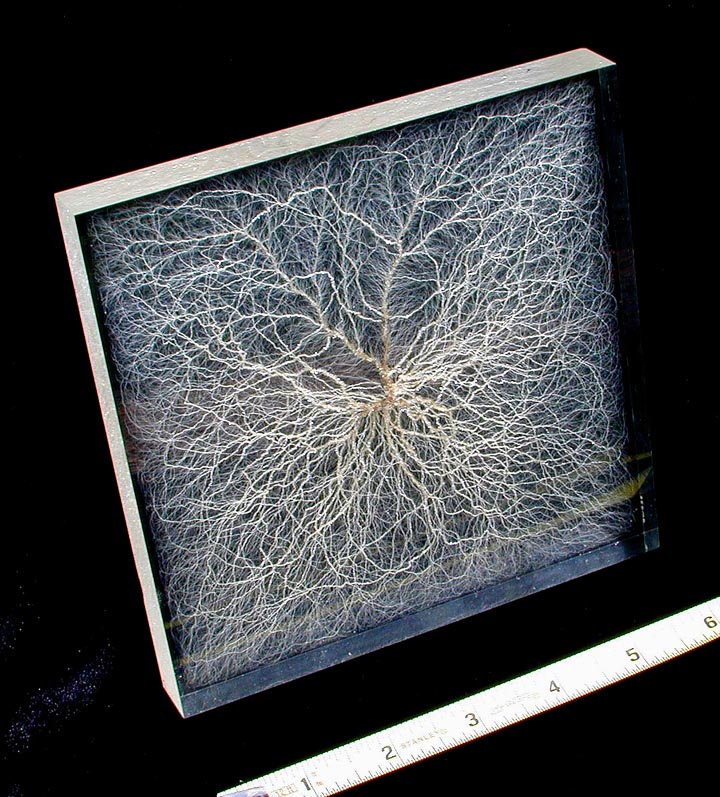|
Beautiful 6" x 6" x 3/4" 3-D Lichtenberg Figure
Suddenly, in a process similar to natural lightning, the electrical stress overcomes the insulating strength of the plastic. The plastic breaks down and the trapped charge abruptly escapes to ground in a miniature lightning-like flash and a powerful bang. Although the actual electrical discharge lasts for less than 20 billionths of a second, its passage creates microscopic fractures in the plastic, leaving permanent Lichtenberg Figures imbedded within. More technical information can be found Here.
Lichtenberg Figures combine high technology with great beauty. Very few people have actually seen a Lichtenberg Figure, and far fewer are privileged to own one as nice as this. Stoneridge Engineering is honored to be the only current provider of Lichtenberg Figures to the general public. 
"A physical experiment which makes a bang is always worth more than a quiet one. Therefore a man cannot strongly enough ask of Heaven: if it wants to let him discover something, may it be something that makes a bang. It will resound into eternity." G. C. Lichtenberg 1742-1799